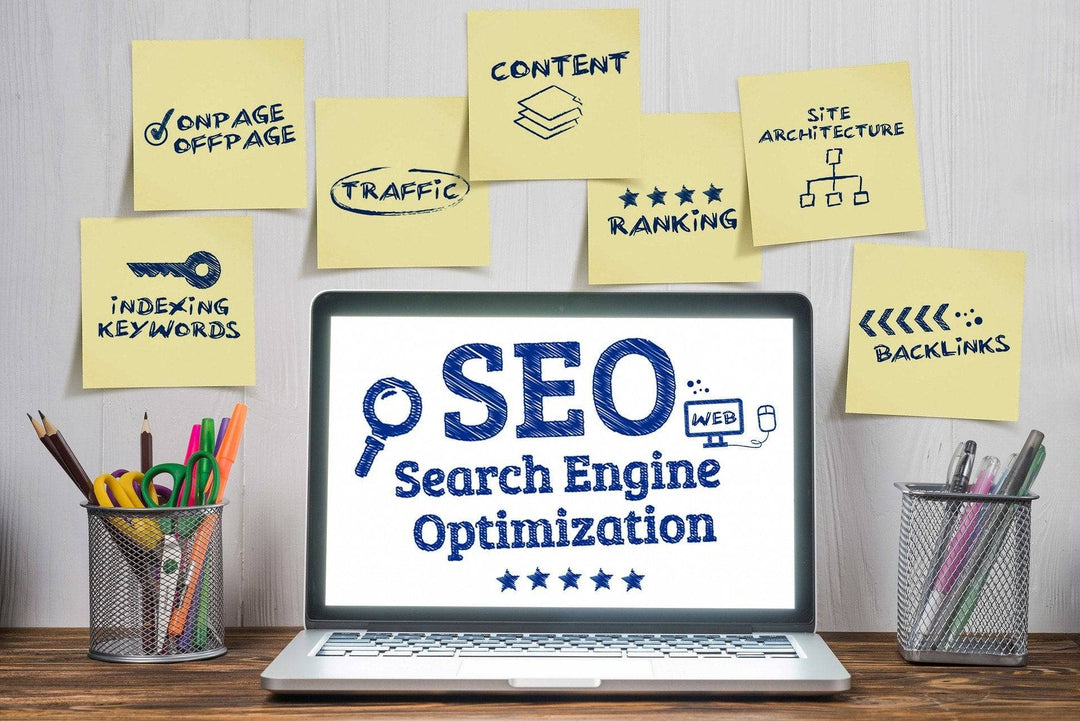Overview
To boost your Shopify store's visibility and sales, implement these effective SEO strategies: conduct keyword research, optimize on-page SEO, enhance user experience, create quality content, build backlinks, focus on local SEO, ensure technical SEO health, and leverage social media. Consistent effort in these areas will attract organic traffic and improve your online presence.
Frequently Asked Questions
1. What is Search Engine Optimization (SEO)?
2. Why is SEO important for my Shopify store?
3. What are some key components of an effective SEO strategy?
4. How can I improve the user experience on my Shopify site?
5. What is local SEO and how can it benefit my store?
In the digital marketplace, elevating your Shopify store's visibility is crucial for attracting and retaining customers. An effective SEO strategy aligns perfectly with this objective. Here, we will explore an array of SEO strategies specifically catered to enhance your Shopify store's visibility, attract organic traffic, and ultimately increase sales. Whether you are launching a new store or considering a Shopify migration Raleigh NC, implementing these actionable tips can make all the difference in your online success.
Understanding SEO: The Foundation of Online Success
Before we dive into the specifics of SEO strategies for your Shopify store, it’s important to understand what SEO is and why it matters.
Search Engine Optimization (SEO) is the process of enhancing your online presence to rank higher in search engine results pages (SERPs). This process involves optimizing various aspects of your website, from its content to its coding structures. Essentially, good SEO practices can enhance your website's visibility, attracting more organic traffic.
Core Components of Your SEO Strategy
Creating an effective SEO strategy involves a multifaceted approach that touches on various areas, including:
1. Keyword Research
A vital starting point for your SEO journey is conducting keyword research. Keywords are the terms or phrases that potential customers use to search for products online. Focusing on the right keywords can help ensure that your Shopify store appears in search results when users are looking for products that you offer.
Using tools like Google Keyword Planner or SEMrush can help you discover high-volume keywords related to your niche. Make sure to incorporate both head terms (shorter, general keywords) and long-tail keywords (longer, more specific phrases) into your content strategy.
2. On-Page SEO for eCommerce
Once you have identified the keywords you want to target, it's time to implement on-page SEO for eCommerce. On-page SEO involves optimizing individual pages on your website to improve their rankings in search results.
- Title Tags: Ensure that each product page has a unique title tag that encompasses your main keyword. Keep it concise and descriptive, ideally under 60 characters.
- Meta Descriptions: Write compelling meta descriptions that summarize what each page is about. This snippet appears underneath your page title in search results and should entice users to click through.
- Headers: Use header tags (H1, H2, H3) to structure your content effectively. Ensure your primary keyword appears in the H1 tag, and use H2 and H3 tags for subheadings.
- Content Optimization: Include your target keywords naturally throughout your product descriptions and blog posts. Avoid keyword stuffing, which can lead to a negative user experience and lower search rankings.
- Image Optimization: Optimize images by using descriptive alt texts and appropriate file names that reflect the image content and include relevant keywords.
3. User Experience (UX)
Search engines favor websites that provide a great user experience. Factors such as page load speed, mobile optimization, and navigation play a crucial role in user satisfaction.
- Mobile Responsiveness: Ensure that your Shopify store is fully responsive, providing an excellent browsing experience across all devices.
- Page Speed: Use tools like Google PageSpeed Insights to assess and enhance your site’s loading time. Fast-loading pages improve the user experience and positively impact SEO.
- Simple Navigation: Make it easy for users to find products with intuitive navigation menus. Ideally, aim for a clean layout that directs users toward popular and featured products.
4. Quality Content Creation
Quality content is one of the strongest aspects of SEO. Regularly publishing blog posts or articles on your Shopify site not only helps in keyword targeting but also positions you as an authority in your niche.
Consider creating how-to guides, product reviews, or industry insights relevant to your audience. This can lead to increased shares and backlinks, enhancing your site’s authority.
Link Building: Amplifying Your Store's Authority
Link building is a tried-and-true SEO tactic that involves acquiring hyperlinks from other websites to your own. These links act as 'votes of confidence' from other sites, signaling to search engines that your content is credible and valuable.
1. Guest Blogging
Reach out to other blogs or websites in your niche and offer to write guest posts. In return, they can provide you with backlinks to your Shopify store. This not only helps improve your SEO but also exposes your brand to new audiences.
2. Collaborate with Influencers
Partnering with influencers in your niche can provide valuable backlinks and enhance your credibility. Influencers can review your products or mention your store on their platforms, driving their followers to your site.

3. Online Directories
Submit your Shopify store to reputable online directories and local business listings. This can boost your visibility and provide valuable backlinks that contribute to your overall SEO strategy.
Local SEO: Capturing Your Target Audience
If you are operating a brick-and-mortar store or provide services locally, focusing on local SEO tactics is crucial to attract nearby customers.
1. Google My Business Optimization
Set up and optimize your Google My Business (GMB) profile. This free tool allows your shop to appear in local search results, particularly when potential customers are searching for search terms related to products you offer. Fill out all relevant fields, including business hours, address, and categories, ensuring that the information is accurate.
2. Local Keywords
Incorporate local keywords such as "Shopify migration Raleigh NC" into your content, meta descriptions, and alt texts. This use of specific geographical locations increases your chances of showing up in local SERPs, attracting customers searching from your area.
3. Collect Reviews
Encourage satisfied customers to leave positive reviews on Google, Yelp, and Facebook. These reviews not only improve your local SEO but also build trust with potential customers who read them before making a purchase.
Technical SEO: The Backbone of Your Store
Technical SEO refers to the non-content elements of your website that impact search engine crawling and indexing. While these aspects may be less visible to users, they play a vital role in your site's overall SEO health.
1. Fixing Broken Links
Regularly audit your website for any broken links or 404 errors. A clean, functioning site not only enhances user experience but also helps maintain your store’s reputation with search engines.
2. XML Sitemap Creation
Ensure that your Shopify store has a well-structured XML sitemap. This helps search engines understand your website’s structure, making it easier for them to index your pages efficiently.
3. Implementing Schema Markup
Use schema markup to give search engines additional context about your content. This can help search engines display rich snippets in search results, making your listings more appealing to users.
Leveraging Social Media for SEO
Social media platforms are powerful tools for increasing your online visibility. Engaging actively on social media can help expand your reach and drive traffic to your Shopify store.
1. Share Your Content
Share your blog posts, product images, and promotional offers on social media platforms like Facebook, Instagram, and Pinterest. Tailor your content to fit the platform and audience you are targeting to drive maximum engagement.
2. Engage with Your Audience
Respond to comments, questions, and messages from your followers. Engaging with your audience builds trust and can lead to higher traffic to your store as they become more curious about your products.
3. Use Paid Advertising
If your budget allows, consider using paid social media advertising to promote your Shopify store. Targeted ads can help you reach specific demographics more effectively, driving qualified traffic to your website.
Final Thoughts: Your Path to Shopify Success
Implementing effective SEO strategies is not a one-time task but requires ongoing effort and monitoring. By employing these tactics for your Shopify store, you will give your brand a more prominent online presence, leading to increased visibility, organic traffic, and sales. Remember, whether you are gearing for a complete store launch or considering something like Shopify migration Raleigh NC, a comprehensive SEO strategy will guide you toward sustained success in the online marketplace. Start today and watch your store thrive!
Linked Product

eCommerce SEO
The eCommerce SEO Pro Plan offers comprehensive support for enhancing your Shopify store's visibility. With initial optimization for your homepage and several additional pages, it includes ongoing keyword research and monthly reports to track progress. The plan also provides tailored strategies for onsite optimization and backlink opportunities, helping to improve overall search engine performance.
View Product





Leave a comment